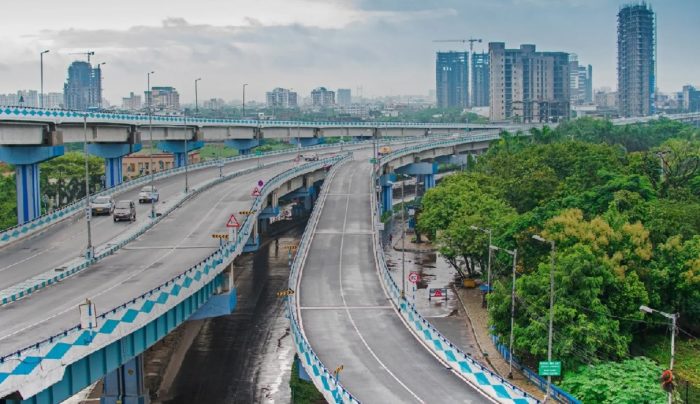
The Indian Government Working to Provide World Class Infrastructure to the Country
In 2018, India ranked 44th out of 167 countries in the World Bank Logistics Performance Index (IPL). One of the reasons for this raise in ranking, is that the government of India is actively supporting the development of the infrastructure sector, adopting policies to ensure the creation of world class infrastructure in the country over a specified period. The infrastructure sector is a key element of the Indian economy which contributes greatly to the overall development of the country. It includes works on electricity, bridges, dams, roads and the development of urban infrastructure.
Current Size of the Market
In India, the logistics sector is growing at a CAGR of 10.5% per year. Experts predict that it will reach 215 billion US dollars in 2020. According to the Department of Industrial Policy and Promotion (DIPP), foreign direct investment (FDI) in the country, for the period from April 2000 to June 2019, amounted to $ 25.12 billion and were used in the construction development sector for townships, housing, built-up infrastructure and construction development projects.
International Investments
If India is experiencing considerable interest from international investors in infrastructure, it is because the country needs to obtain $ 777,73 billion to invest in it by 2022. According to the government, this is the only way to ensure sustainable development in the country.
Here are some of the most important investments made in 2019 and before:
- In October 2019, the overall PE/VC investments inside India reached an all-time high when investments into infrastructure were recorded at $ 1.4 billion.
- The Abu Dhabi Investment Authority, Public Sector Pension Investment Board and National Investment and Infrastructure Fund invested $ 1.1 billion into GVK Airport Holdings Ltd., the largest sum last year.
- In only 6 months last year (April through September), the growth of the 8 core industries totalled 1.3%.
- Thanks to the Saubhagya Scheme, 26.02 million households have access to electricity since March 31, 2019.
- Already in 2018, the infrastructure sector in India had received $ 1.97 billion in private equity and venture capital investments.
- And prior to that, in 2017, the Indian infrastructure sector went through 91 Merger and Acquisition deals worth $ 5.4 billion.
Government Investments into Infrastructures
The 2019/20 Union Budget of the Indian government showed clearly that it intends to invest highly in the infrastructure sector, while focussing on highways, renewable energy and urban transport. It plans to spend $ 1.4 trillion on infrastructure before the end of 2024. Thanks partly to these investments, NHAI will be able to generate revenue of $ 14.31 billion from its highway tolls over the next five years.
In total, the government of India will allocate $ 63.20 billion for the sector of infrastructures which it intends to divide between:
- Communication – To develop post and telecommunications departments.
- The Indian Railways – 15% of this budget will be for capital expenditure.
- Road transport and highways – General.
- Green Energy Corridor Project – To increase its capacity through wind and solar power.
- Telecommunication infrastructure – General.
- Water supply – To supply all households in 500 cities.
- Health – To upgrade the state government medical colleges at the district hospitals, government medical colleges and government health institutions.
Past Governments Achievements
The process of investing into the country’s infrastructure has been going on for a few years now and has shown great success. Here is a list of some of the things that the government was able to achieve throughout the last four years:
- Complete a network of 657 Km of Metro rail.
- Get the Canadian asset management firm Brookfield’s to acquire Pipeline Infrastructure India during the first quarter of 2019, for an amount of US$ 1.9 billion.
- Increase the length of the total national highways to 122,434 kms in 2018 from 92,851 kms in 2014.
- India jumped to #24 in 2018 from #137 in 2014 on the World Bank’s Ease of doing business study in terms of “access to electricity”.
- Reduce its energy deficit to 0.7 per cent in 2018 from 4.2 per cent in 2014.
- Increase its number of airports to 102.
The Road Ahead
Although the results already show great progress, India’s government intends to continue moving forward in the modernization of the country’s infrastructure.
In only one year, from 2017 to 2018, construction on the national highways in India increased by 20%. In 2019, it is expected to cover 50,000 kilometres more. The government will also increase its efforts to extend and better its railways infrastructure between 2018-2030. To do so it suggested another investment of $ 750 billion.
The country was also able to develop a great partnership with Japan. They have joined hands in the development of the infrastructure in India’s north-eastern states, and now, they are planning an India-Japan Coordination Forum for the Development of North East. This should provide the basis to the creation of common strategic infrastructure projects in the northeast of the country.
